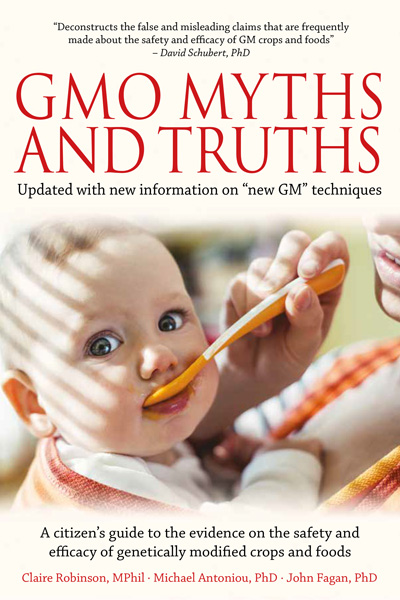 Leukemia findings are especially striking – potentially lending support to plaintiffs in court cases who allege that Roundup exposure caused their blood cancer
Leukemia findings are especially striking – potentially lending support to plaintiffs in court cases who allege that Roundup exposure caused their blood cancer
A comprehensive carcinogenicity study on the world’s most used herbicide, glyphosate, involving scientists from Europe and the US, has found that low doses of the controversial weedkiller cause multiple types of cancer in rats.
In this long-term study, published today, glyphosate alone and two commercial glyphosate-based formulations, Roundup BioFlow (MON 52276) used in the EU and Ranger Pro (EPA 524-517) used in the US, were administered to rats via drinking water beginning in prenatal life, at doses of 0.5, 5, and 50 mg/kg body weight/day for 2 years. These doses are currently considered safe by regulatory agencies and correspond to the EU Acceptable Daily Intake (ADI) and the EU’s No Observed Adverse Effect Level (NOAEL) for glyphosate. Glyphosate is used on over 80% of GM crops.
In all three treatment groups of the study, increased incidences of benign and malignant tumours at multiple anatomic sites were observed compared to controls. These tumours arose in haemolymphoreticular tissues (leukemia), skin, liver, thyroid, nervous system, ovary, mammary gland, adrenal glands, kidney, urinary bladder, bone, endocrine pancreas, uterus and spleen (hemangiosarcoma). Increased incidences occurred in both sexes. Most of these involved tumours that are rare in Sprague Dawley rats (background incidence < 1%), with 40% of leukemia deaths in the treated groups occurring in early life. Increased early deaths were also observed for other solid tumours.
The leukemia findings are especially strong and may provide important support for plaintiffs in court cases who allege that exposure to Roundup caused their Non-Hodgkin lymphoma, another type of blood cancer.
“We observed early onset and early mortality for a number of rare malignant cancers, including leukemia, liver, ovary and nervous system tumours. Notably, approximately half of the deaths from leukemia seen in the glyphosate and GBHs [glyphosate-based herbicide] treatment groups occurred at less than one year of age, comparable to less than 35-40 years of age in humans. By contrast, no case of leukemia was observed in the first year of age in more than 1600 Sprague-Dawley historical controls in carcinogenicity studies conducted by the Ramazzini Institute and the National Toxicology Program (NTP),” stated Dr Daniele Mandrioli, Director of the Cesare Maltoni Cancer Research Center of the Ramazzini Institute and Principal Investigator of the study.
The multi-institutional Global Glyphosate Study is being led by the Cesare Maltoni Cancer Research Center of the Ramazzini Institute in Italy and involves scientists from Boston College, George Mason University, King’s College London, Icahn School of Medicine at Mount Sinai, Scientific Centre of Monaco, University of Bologna, the Institute of Agricultural Biology and Biotechnology of the Italian National Research Council, the Italian National Institute of Health and the National Food Safety Committee of the Italian Ministry of Health.
The Cesare Maltoni Cancer Research Center of the Ramazzini Institute, with over 200 compounds studied in over 50 years, is the largest bioassay programme in the EU: vinyl chloride, asbestos, benzene and radio frequencies are amongst the carcinogenic agents that have been investigated in its laboratory. Most recently, the Cesare Maltoni Cancer Research Center of the Ramazzini Institute also published a peer-reviewed report in collaboration with the US National Institute of Environmental Health Sciences (NIEHS) on the toxicological effects of nicotine.
These new results provide robust evidence supporting International Agency for Research on Cancer’s (IARC) conclusion in 2015 that there is “sufficient evidence of carcinogenicity of glyphosate in experimental animals”. Furthermore, the study’s data are consistent with epidemiological evidence on the carcinogenicity of glyphosate and glyphosate-based herbicides. “Our findings reinforce IARC’s classification of glyphosate as a probable human carcinogen and are consistent with experimental animal studies as well as human correlational and weight-of-evidence evaluations that have reported associations between glyphosate exposure and certain cancers, particularly hematological malignancies,” said Dr Melissa Perry, study co-author and Environmental Epidemiologist at George Mason University College of Public Health.
The Global Glyphosate Study is the most comprehensive toxicological study ever conducted on glyphosate and glyphosate-based herbicides. It aims to provide vital data for government regulators, policy makers and the general public. The study is examining the impacts of glyphosate and glyphosate-based herbicides on carcinogenicity, neuro-developmental toxicity, multi-generational effects, organ toxicity, endocrine disruption and prenatal developmental toxicity.
"This robust study, based on a protocol encompassing pre- and post-natal development, fulfils the need for sound scientific evidence on the toxicology of glyphosate. The results highlight the tumorigenic potential of glyphosate and glyphosate-based products at dose levels considered as 'safe'. This new evidence has to be carefully considered by the regulatory authorities globally," added Dr Alberto Mantovani, study co-author and member of the Italian National Food Safety Committee (CNSA).
The GGS’s findings on glyphosate’s toxicity to the microbiome, which were peer-reviewed and published in late 2022 and presented at the EU Parliament in 2023, also showed adverse effects at doses that are currently considered safe in the EU (0.5 mg/kg bw/day, equivalent to the EU Acceptable Daily Intake).
The GGS also previously published a pilot study, which showed endocrine and reproductive toxicity in rats at glyphosate doses currently considered safe by regulatory agencies in the US (1.75 mg/kg bw/day). These findings were later confirmed in a human population of mothers and newborns exposed to glyphosate during pregnancy.
The next step in the GGS will be the neurotoxicity arm, which is vital for understanding any role glyphosate and glyphosate-based herbicides may be playing in the rise of neurological related diseases and disorders.
"The findings from this carefully conducted study, and especially the observation that prenatal exposures of infant rats to glyphosate during pregnancy increase incidence and mortality from early-life leukemia, are a powerful reminder of human infants' great vulnerability to toxic chemicals and strong reason to eliminate glyphosate from the production of foods consumed by pregnant women and their children," concluded Dr Philip Landrigan, study co-author and Director of the Program for Global Public Health and the Common Good at Boston College.
The study: Panzacchi S et al (2025). Carcinogenic effects of long-term exposure from prenatal life to glyphosate and glyphosate-based herbicides in Sprague–Dawley rats. Environmental Health volume 24, Article number: 36 (2025). https://ehjournal.biomedcentral.com/articles/10.1186/s12940-025-01187-2










